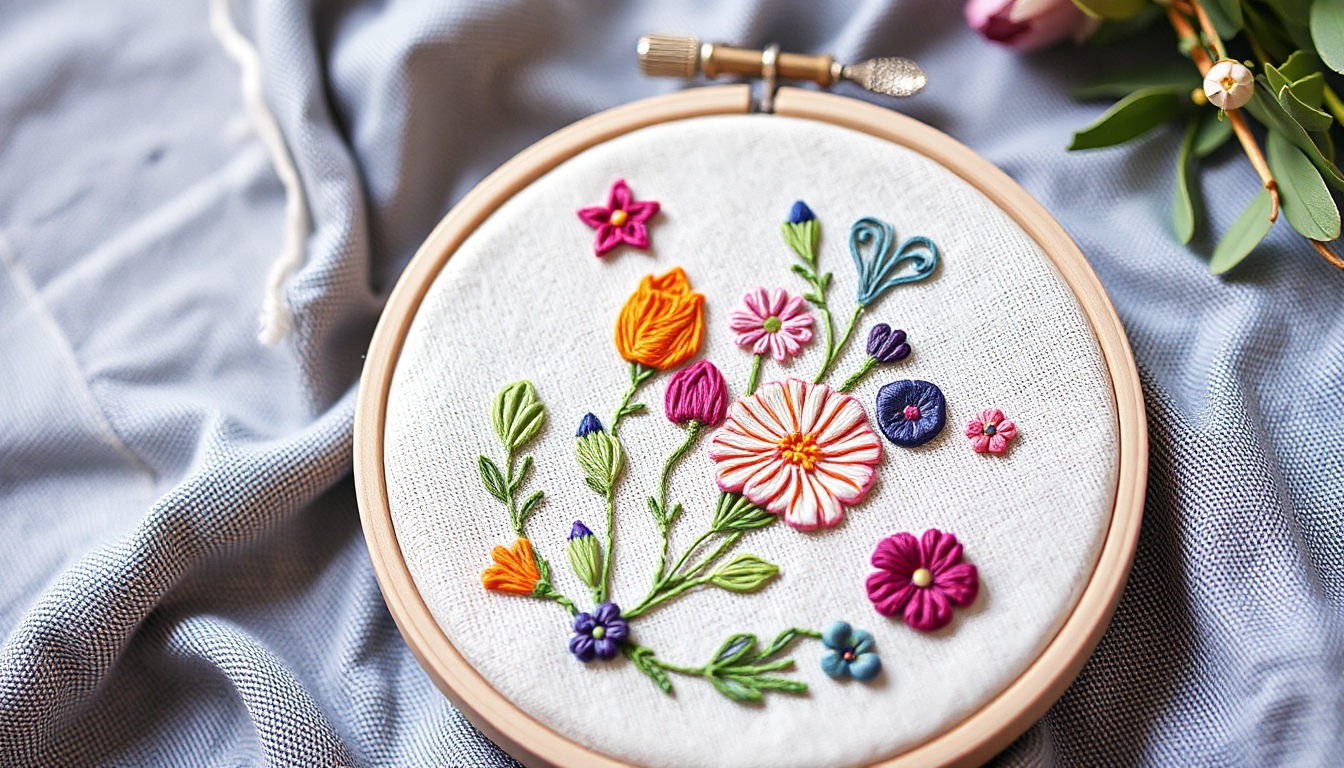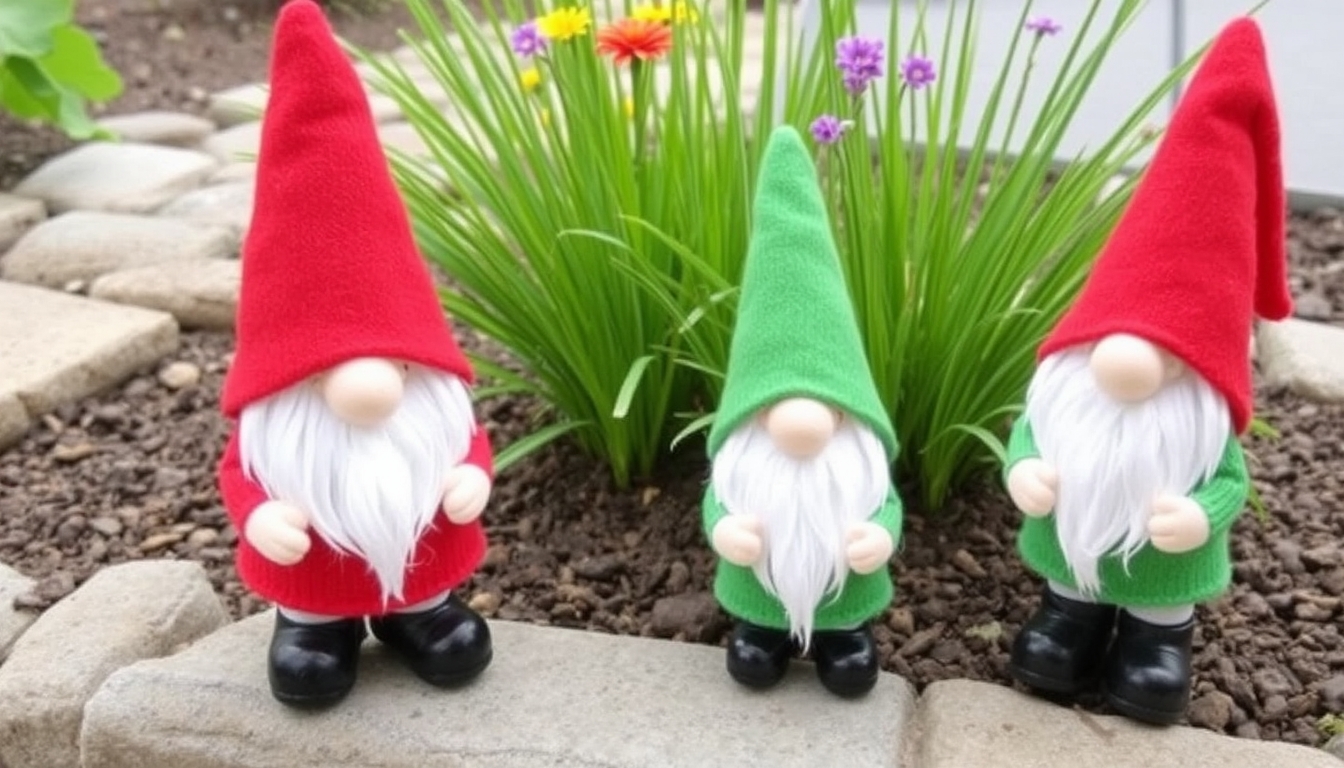Welcome to our comprehensive guide on the art of DIY embroidery! Whether you’re a beginner or have some experience, this article is here to help you master the craft. Embroidery is a beautiful form of art that allows you to add a personal touch to various items, from clothing and accessories to home decor. In this guide, we will cover the essential tools, basic stitches, and helpful tips to get you started on your embroidery journey. So, grab your needle and thread, and let’s dive into the world of DIY embroidery!
Essential Tools for DIY Embroidery
Before you begin your embroidery project, it’s important to have the right tools at your disposal. Here are the essential items you’ll need:
Embroidery Hoop
An embroidery hoop is a circular frame that holds your fabric taut while you work. It helps prevent wrinkles and ensures even stitching. Choose a size that matches the dimensions of your project.
Embroidery Needles
Embroidery needles come in various sizes and types, such as crewel or tapestry needles. Select a needle that suits your fabric and thread. Thicker fabrics may require larger needles, while delicate fabrics may need finer ones.
Embroidery Floss
Embroidery floss, also known as embroidery thread, is made of multiple strands that can be separated according to the desired thickness. It comes in a wide range of colors and materials, such as cotton or silk. Choose colors that complement your design.
Embroidery Scissors
A pair of sharp, small embroidery scissors is essential for trimming excess thread and precision cutting. Avoid using regular household scissors, as they may fray or damage the embroidery floss.
Transfer Method
Depending on your design, you’ll need a transfer method to transfer the pattern onto your fabric. This can be done using transfer pens, iron-on transfers, or carbon paper. Choose a method that works best for your project.
Fabric
Select a fabric that suits your embroidery project. Common choices include cotton, linen, or even denim. Ensure that the fabric is clean, ironed, and free of any wrinkles or creases before you start stitching.
Now that you have gathered all the necessary tools, it’s time to learn some basic stitches. In the next section, we will cover the fundamental stitches that form the foundation of embroidery. So, let’s move on to Section 2!
Mastering Basic Embroidery Stitches
Embroidery stitches are the building blocks of any design. Here are some fundamental stitches to get you started:
Backstitch
The backstitch is commonly used for outlining and creating fine lines. Start by bringing the needle up from the fabric and then insert it back into the fabric a short distance ahead. Bring the needle up again from behind the previous stitch and repeat.
Satin Stitch
The satin stitch is perfect for filling in shapes and creating smooth, solid areas. Start by bringing the needle up at one end of the shape and insert it back down at the other end. Continue stitching parallel stitches next to each other until the area is filled.
French Knot
The French knot adds texture and dimension to your embroidery. Bring the needle up through the fabric and wrap the thread around the needle a few times. Insert the needle back into the fabric close to where it came up, holding the wraps in place with your thumb. Gently pull the needle through to create a knot.
Chain Stitch
The chain stitch is a versatile stitch that can be used for outlining or creating decorative lines. Start by bringing the needle up from the fabric and then insert it back down through the same hole. Bring the needle up again a short distance ahead and pass the needle through the loop created to form a chain.
Running Stitch
The running stitch is one of the simplest and quickest stitches. It can be used for outlining or adding texture to your design. Simply bring the needle up through the fabric and insert it back down a short distance ahead. Repeat this process to create a line of stitches.
Practice these basic stitches on a spare piece of fabric to improve your technique. Once you feel comfortable with these stitches, you can experiment with more advanced stitches and techniques. In the next section, we will explore some tips and tricks to enhance your embroidery skills. So, let’s move on to Section 3!
Helpful Tips to Enhance Your Embroidery Skills
Embroidery is a craft that requires practice and patience. Here are some tips to help you improve your embroidery skills:
Practice Proper Tension
Maintaining the right tension in your stitches is crucial for achieving neat and even results. Avoid pulling the thread too tightly or leaving it too loose. Experiment with different tensions until you find the one that works best for you.
Start Small
Embarking on a large and intricate design as a beginner can be overwhelming. Start with smaller and simpler patterns to build your confidence and skills. As you gain more experience, you can gradually tackle more complex projects.
Use a Thimble
When working with thicker fabrics or tightly woven materials, using a thimble can protect your fingers from getting sore or injured. It provides extra support and makes it easier to push the needle through the fabric.
Organize Your Thread
Keeping your embroidery floss organized will save you time and frustration. Use floss bobbins or small plastic bags to store each color separately. Label them with the corresponding color number or name to easily find the thread you need.
Experiment with Different Fabrics
Don’t limit yourself to just one type of fabric. Experiment with different textures and materials to add variety to your embroidery projects. Each fabric may require slight adjustments in your stitching technique.
Take Breaks
Embroidery can be a time-consuming activity, so remember to take breaks to rest your eyes, hands, and mind. This will help prevent strain and keep you focused and motivated throughout your project.
By following these tips and practicing regularly, you’ll steadily improve your embroidery skills and create beautiful pieces of art. In the next section, we will explore some creative ideas and inspiration to take your DIY embroidery to the next level. So, let’s move on to Section 4!
Creative Ideas and Inspiration for DIY Embroidery
Looking for some creative ideas to take your DIY embroidery to the next level? Here are some inspirations to fuel your creativity:
Personalized Gifts
Embroidered gifts make for thoughtful and personalized presents. Consider embroidering initials, names, or meaningful quotes on items like handkerchiefs, tote bags, or pillowcases. The recipient will appreciate the extra effort and personal touch.
Nature-Inspired Designs
Draw inspiration from the beauty of nature for your embroidery projects. Stitch intricate flowers, leaves, or animals to add a touch of natural elegance to your creations. Take a walk in the park or browse through nature photography for ideas.
Geometric Patterns
Geometric patterns offer a modern and contemporary twist to traditional embroidery. Experiment with triangles, circles, or intricate geometric shapes to create eye-catching designs. Combine different colors and stitch techniques for added visual interest.
Embroidered Clothing Accents
Give your wardrobe a unique and personalized flair by adding embroidered accents to your clothing. Embroider floral motifs on the collar of a denim jacket or create intricate patterns on the cuffs of a shirt. The possibilities are endless, so let your imagination run wild.
Upcycled Embroidery
Embroidery can breathe new life into old or worn-out items. Give a second life to a vintage tablecloth or revamp a plain canvas bag with colorful embroidery. Upcycling not only reduces waste but also allows you to create one-of-a-kind pieces.
Embroidery Samplers
Create embroidery samplers to practice different stitches and showcase your progress. These small, decorative pieces can be framed and displayed as artwork or used as reference guides for future projects. Experiment with various stitches and thread combinations to create visually appealing samplers.
With these creative ideas and inspirations, you can take your DIY embroidery to new heights. Remember to have fun and experiment with different techniques, colors, and designs. Whether you’re a beginner or an experienced embroiderer, the joy of creating something with your own hands is truly rewarding. We hope this guide has provided you with the knowledge and inspiration you need to dive into the world of embroidery. Happy stitching!
Exploring Advanced Techniques in DIY Embroidery
Ready to take your embroidery skills to the next level? Here are some advanced techniques to explore:
Thread Painting
Thread painting is a technique that involves layering and blending different colors of thread to create a realistic and detailed image. It requires patience and precision as you carefully stitch to mimic shading, highlights, and textures.
Goldwork Embroidery
Goldwork embroidery adds a touch of luxury and elegance to your projects. Using metallic threads and wires, you can create stunning designs that feature intricate patterns and textures. From gilded flowers to elaborate motifs, the possibilities are endless.
Crewel Embroidery
Crewel embroidery, traditionally done with wool thread, allows for bold and textured designs. This technique often features floral motifs and intricate fillings. Experiment with different stitches and textures to create depth and dimension.
Stumpwork
Stumpwork is a three-dimensional embroidery technique that involves creating raised elements on your fabric. This can include flowers, insects, or any other design element that you want to stand out. Use wire, padding, and various stitches to achieve a sculptural effect.
Blackwork
Blackwork is a monochromatic embroidery style characterized by intricate geometric patterns worked in black thread. This technique creates a striking contrast against a lighter fabric. Experiment with different stitch patterns to create unique and visually appealing designs.
Whitework
Whitework embroidery is characterized by delicate and intricate white stitches on white fabric. This technique often features openwork, cutwork, or shadow work to create beautiful lace-like designs. Explore various whitework techniques to add an elegant touch to your projects.
These advanced embroidery techniques require practice and dedication, but they offer endless possibilities for creativity and artistic expression. Challenge yourself by exploring these techniques and push the boundaries of your embroidery skills. Remember, the journey of embroidery is all about continuous learning and growth. Enjoy the process and have fun creating your own masterpieces!
Embroidery Care and Preservation
To ensure the longevity of your embroidered creations, it’s important to properly care for and preserve them. Here are some tips to keep your embroidery looking its best:
Washing and Cleaning
Before washing any embroidered item, always check the care instructions on the fabric. Hand-washing is generally recommended to prevent damage to delicate stitches. Use a mild detergent and lukewarm water, and gently agitate the fabric. Avoid wringing or twisting the embroidery, as it can distort the stitches. Rinse thoroughly and lay it flat to air dry.
Storage
When storing embroidered pieces, it’s important to protect them from dust, sunlight, and moisture. Clean and dry the items thoroughly before storing them. Avoid folding or creasing the embroidery to prevent permanent damage. Store them in acid-free tissue paper or cotton bags to allow for breathability.
Displaying
If you wish to display your embroidered artwork, choose a location away from direct sunlight and excessive humidity. UV-protective glass can be used to further shield the embroidery from harmful rays. Consider framing the piece under archival conditions to protect it from dust and damage.
Handling
When handling embroidered items, ensure your hands are clean and dry to prevent transferring dirt or oils onto the fabric. Avoid excessive handling, as repeated touching can cause wear and tear on the stitches. If necessary, use clean white cotton gloves to handle delicate pieces.
Regular Inspection
Periodically inspect your embroidered pieces for any signs of damage or loose threads. Promptly repair any loose stitches to prevent further unraveling. If you notice any stains or discoloration, consult a professional textile conservator for advice on how to safely remove them.
Professional Preservation
If you have valuable or heirloom embroidered pieces, consider consulting a professional textile conservator for proper preservation and restoration. They have the expertise and knowledge to handle delicate fabrics and intricate stitches, ensuring the longevity of your cherished items.
By following these care and preservation tips, you can protect your embroidered pieces and enjoy them for years to come. Treat your embroidery with care and respect, and it will continue to bring joy and beauty to your life. We hope this guide has been helpful in your embroidery journey. Happy stitching!
Finding Community and Inspiration in the Embroidery World
Embroidery is not just a solitary craft; it’s a vibrant and supportive community. Here are some ways to connect with fellow embroidery enthusiasts and find inspiration:
Join Online Communities
There are numerous online communities dedicated to embroidery where you can connect with like-minded individuals. Join forums, Facebook groups, or follow embroidery hashtags on Instagram to share your work, seek advice, and learn from others.
Attend Workshops and Classes
Participating in workshops and classes is a great way to learn new techniques, improve your skills, and meet fellow embroiderers. Look for local craft stores, community centers, or online platforms that offer embroidery workshops or courses.
Visit Craft Fairs and Exhibitions
Attending craft fairs and exhibitions provides an opportunity to see a wide range of embroidery styles and techniques. You can gather inspiration, discover new artists, and even purchase unique embroidery supplies or artwork.
Collaborate with Other Artists
Collaborating with artists from different mediums can result in exciting and innovative projects. Consider partnering with painters, ceramicists, or fashion designers to combine embroidery with their work. The cross-pollination of ideas can lead to breathtaking creations.
Follow Embroidery Blogs and Magazines
Stay up-to-date with the latest trends, techniques, and news in the embroidery world by following popular embroidery blogs and magazines. These platforms often feature interviews with artists, tutorials, and showcases of exceptional embroidery work.
Participate in Challenges and Swaps
Engage in embroidery challenges and swaps organized by online communities or social media groups. These activities encourage you to explore new themes, experiment with different stitches, and exchange embroidered items with other participants.
By immersing yourself in the embroidery community, you can forge meaningful connections, find inspiration, and continue to grow as an embroiderer. Celebrate the diversity of styles and techniques within the embroidery world, and let the support and creativity of the community propel you forward in your embroidery journey.
Embroidery as a Therapeutic and Mindful Practice
Embroidery is not just a creative hobby; it can also be a therapeutic and mindful practice. Here’s how embroidery can benefit your well-being:
Stress Relief
The repetitive nature of embroidery can have a calming effect on the mind, helping to alleviate stress and anxiety. As you focus on each stitch, your mind enters a state of relaxation, providing a temporary respite from the demands of daily life.
Mindfulness and Presence
Embroidery encourages mindfulness and being present in the moment. As you concentrate on the movement of the needle and the feel of the fabric, you become fully engaged in the process. This helps to quiet the mind and cultivate a sense of mindfulness.
Creative Expression
Embroidery offers a creative outlet for self-expression. Through your choice of colors, designs, and stitches, you can convey emotions, tell a story, or simply explore your artistic vision. This creative expression can be cathartic and empowering.
Sense of Achievement
Completing an embroidery project can give you a sense of accomplishment and boost your self-esteem. Witnessing the transformation of a plain piece of fabric into a beautiful work of art can instill a sense of pride and satisfaction.
Focus and Concentration
Embroidery requires focus and concentration, which can improve your ability to stay present and enhance your overall cognitive skills. As you navigate through intricate stitches and patterns, your attention becomes honed and your ability to concentrate strengthens.
Connection to Tradition
Embroidery is a craft deeply rooted in tradition and history. Engaging in this timeless art form connects you to generations of embroiderers who came before you. It’s a way to honor the past while leaving your own mark on the art of embroidery.
Embroidery offers not only a creative outlet but also a therapeutic and mindful practice that can benefit your overall well-being. Whether you embroider for relaxation, self-expression, or simply to find joy in the process, remember to embrace the meditative nature of this craft and allow it to bring balance and harmony into your life.
In conclusion, DIY embroidery is a versatile and fulfilling craft that allows you to unleash your creativity and add a personal touch to various items. Whether you’re a beginner or an experienced embroiderer, this comprehensive guide has provided you with the essential tools, basic stitches, helpful tips, and inspiration to embark on your embroidery journey.
From mastering the art of DIY embroidery and exploring advanced techniques to caring for and preserving your embroidered pieces, there is a wealth of knowledge and creativity to explore. Additionally, the embroidery community offers a supportive network of fellow enthusiasts who can inspire and guide you along the way.
Embroidery is not just about stitching; it’s a therapeutic and mindful practice that can bring a sense of calm, focus, and accomplishment. As you immerse yourself in this art form, remember to enjoy the process, embrace the imperfections, and let your creativity flourish.
So, grab your embroidery hoop, thread your needle, and let your imagination soar. Whether you’re creating personalized gifts, exploring advanced techniques, or finding solace in the meditative nature of embroidery, this craft has the power to enrich your life in countless ways. Happy stitching!






